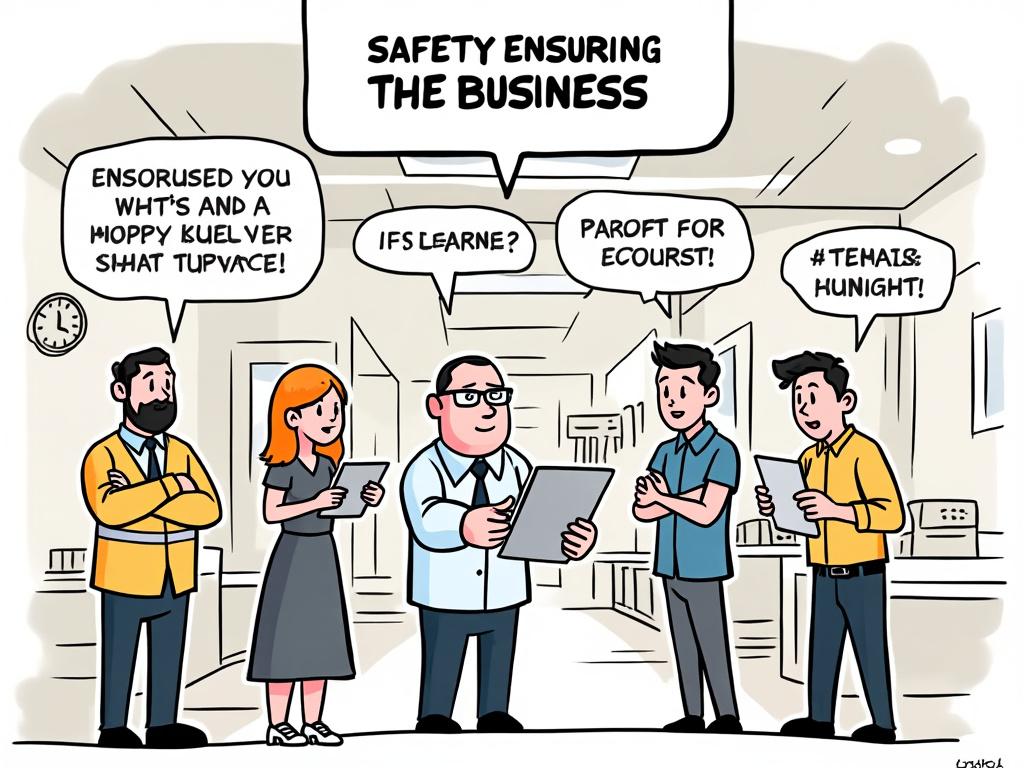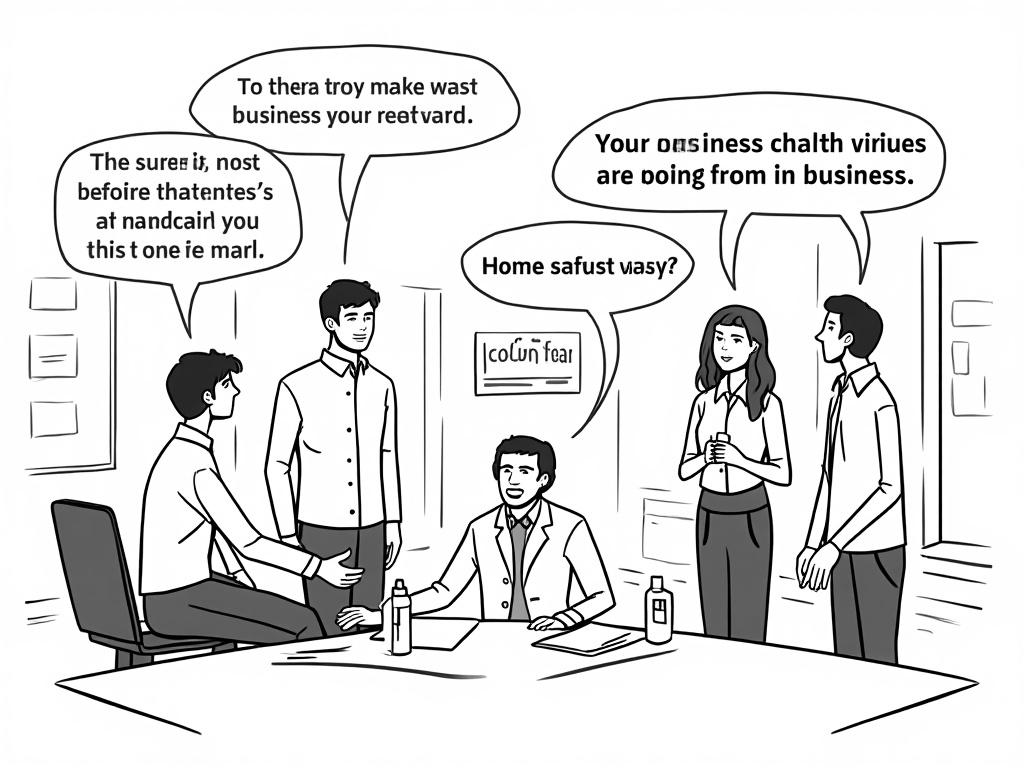
Workplace Health and Safety in the UAE: Regulations
Reading time: 12 minutes
Ever wondered how the UAE manages to maintain some of the world’s most ambitious construction projects while protecting worker welfare? You’re about to discover the comprehensive framework that makes it possible. Let’s navigate the essential regulations that every employer and employee needs to understand in today’s UAE workplace landscape.
Table of Contents
- The Regulatory Framework: Your Foundation
- Key Compliance Requirements
- Industry-Specific Safety Standards
- Enforcement and Penalties
- Practical Implementation Guide
- Your Safety Excellence Roadmap
- Frequently Asked Questions
The Regulatory Framework: Your Foundation
Well, here’s the straight talk: UAE workplace safety isn’t just about compliance—it’s about creating sustainable business success. The regulatory landscape has evolved dramatically since the UAE Labor Law Federal Law No. 8 of 1980, with significant updates culminating in the comprehensive Federal Law No. 33 of 2021.
Core Legislative Pillars
The UAE’s safety framework rests on three fundamental pillars that every business leader must understand:
Federal Law No. 33 of 2021 serves as the primary legislation governing workplace safety across all emirates. This law mandates that employers provide a safe working environment, conduct regular risk assessments, and maintain comprehensive safety records. The legislation covers everything from basic safety equipment to complex industrial hazard management.
Cabinet Resolution No. 44 of 2022 provides detailed implementation guidelines, specifying exact safety protocols for different industries. This resolution is particularly crucial for understanding sector-specific requirements and compliance timelines.
Local Emirate Regulations add another layer of specificity. For instance, Dubai Municipality’s regulations focus heavily on construction safety, while Abu Dhabi’s ADNOC guidelines emphasize oil and gas industry safety protocols.
Key Regulatory Bodies
| Authority | Jurisdiction | Primary Focus | Inspection Frequency | Penalty Range (AED) |
|---|---|---|---|---|
| Ministry of Human Resources | Federal | General workplace safety | Annual/Complaint-based | 5,000 – 50,000 |
| Dubai Municipality | Dubai | Construction & public health | Quarterly | 10,000 – 100,000 |
| ADNOC HSE | Abu Dhabi | Oil & gas operations | Monthly | 25,000 – 500,000 |
| FEWA | Northern Emirates | Electrical safety | Bi-annual | 3,000 – 25,000 |
Key Compliance Requirements
Quick Scenario: Imagine you’re managing a mid-size manufacturing facility in Sharjah. What specific compliance requirements must you navigate? Let’s dive deep and turn potential challenges into strategic opportunities.
Essential Safety Documentation
Every workplace in the UAE must maintain a comprehensive safety documentation system. The core requirements include:
Risk Assessment Reports: Updated annually or when significant operational changes occur. These reports must identify potential hazards, assess risk levels, and outline mitigation strategies. According to recent Ministry statistics, companies with comprehensive risk assessments experience 67% fewer workplace incidents.
Emergency Response Plans: Detailed procedures for various emergency scenarios, including fire evacuation, medical emergencies, and natural disasters. The plans must be available in Arabic and English, with visual aids for non-Arabic speakers.
Training Records: Documentation of all safety training provided to employees, including initial orientation, ongoing education, and specialized equipment training. The UAE requires a minimum of 8 hours of safety training annually for all employees.
Workplace Safety Standards
The UAE has implemented specific standards that align with international best practices while addressing local environmental and cultural considerations:
Personal Protective Equipment (PPE): Employers must provide appropriate PPE free of charge and ensure its proper use. This includes hard hats, safety glasses, protective clothing, and respiratory protection as needed. The specification standards follow both ANSI and EN guidelines.
Environmental Controls: Given the UAE’s extreme climate, special attention is paid to heat stress prevention, adequate ventilation, and hydration requirements. During summer months (June-September), outdoor work is restricted between 12:30 PM and 3:00 PM.
UAE Workplace Incident Statistics Comparison
Industry-Specific Safety Standards
Construction Industry: The High-Stakes Environment
The construction sector faces unique challenges in the UAE, with projects ranging from iconic skyscrapers to massive infrastructure developments. The Dubai Municipality’s “Green Building Regulations” mandate specific safety protocols for high-rise construction.
Case Study: The Burj Khalifa Project
During the construction of the world’s tallest building, Emaar implemented a comprehensive safety program that became the gold standard for UAE construction. The project achieved zero fatalities through rigorous safety protocols, including mandatory safety briefings in seven languages, advanced fall protection systems, and real-time safety monitoring technology.
Key construction safety requirements include:
- Fall Protection Systems: Mandatory for work above 2 meters
- Crane Safety Protocols: Daily inspections and certified operators
- Scaffolding Standards: Regular structural integrity checks
- Heat Stress Prevention: Mandatory rest periods and hydration stations
Oil and Gas: Zero-Tolerance Approach
The oil and gas sector operates under the most stringent safety requirements in the UAE. ADNOC’s HSE Management System sets the benchmark for the entire region, with a focus on process safety and environmental protection.
Process Safety Management: Companies must implement comprehensive process safety management systems that include hazard identification, risk assessment, and incident investigation protocols. The system requires regular safety audits by certified third-party organizations.
Enforcement and Penalties
Ready to transform compliance challenges into competitive advantages? Understanding the enforcement landscape is crucial for strategic business planning.
Inspection Protocols
UAE authorities conduct both scheduled and surprise inspections, with frequency varying by industry risk level and compliance history. Companies with excellent safety records may qualify for reduced inspection frequencies, while those with violations face increased scrutiny.
Inspection Process:
- Pre-inspection Notice: 24-48 hours for scheduled inspections
- Documentation Review: Safety records, training certificates, incident reports
- Physical Inspection: Workplace conditions, equipment status, employee interviews
- Violation Assessment: Immediate, correctable, or serious violations
- Follow-up Requirements: Correction timelines and re-inspection schedules
Penalty Structure
The UAE employs a graduated penalty system designed to encourage compliance while providing proportionate consequences for violations:
Minor Violations: AED 3,000-10,000 (inadequate signage, minor documentation issues)
Moderate Violations: AED 10,000-50,000 (PPE non-compliance, training deficiencies)
Serious Violations: AED 50,000-200,000 (immediate danger situations, repeat violations)
Critical Violations: AED 200,000+ plus potential business closure (fatality incidents, willful negligence)
Practical Implementation Guide
Building Your Safety Management System
Pro Tip: The right preparation isn’t just about avoiding problems—it’s about creating scalable, resilient business foundations that enhance productivity and employee satisfaction.
Step 1: Gap Analysis and Planning
Conduct a comprehensive assessment of your current safety practices against UAE requirements. Many companies discover that 70% of compliance issues stem from inadequate documentation rather than actual safety deficiencies.
Step 2: Training Program Development
Develop a multi-layered training program that addresses general safety awareness, job-specific hazards, and emergency response procedures. Include cultural sensitivity training to ensure all workers, regardless of background, understand and follow safety protocols.
Success Story: Al Futtaim Group’s Safety Transformation
Al Futtaim Group reduced workplace incidents by 78% over three years by implementing a comprehensive safety culture program. The initiative included peer safety ambassadors, multilingual safety materials, and incentive programs for safety suggestions. The company’s approach demonstrates how cultural integration enhances safety compliance.
Technology Integration
Modern safety management increasingly relies on technology solutions to enhance compliance and prevent incidents:
Digital Safety Management Systems: Cloud-based platforms that manage documentation, track training compliance, and generate reports for regulatory submissions.
Wearable Safety Technology: Smart helmets and vests that monitor environmental conditions, detect falls, and provide real-time safety alerts.
Mobile Safety Apps: Enable workers to report hazards, access safety information, and receive emergency notifications instantly.
Common Implementation Challenges
Challenge 1: Multi-cultural Workforce Communication
Solution: Develop visual safety communications using universal symbols and pictographs. Provide safety materials in at least three languages: Arabic, English, and the predominant worker language (often Hindi or Urdu).
Challenge 2: Keeping Up with Regulatory Changes
Solution: Subscribe to official government updates and join industry associations that provide regulatory briefings. Establish quarterly compliance reviews to ensure ongoing adherence to new requirements.
Challenge 3: Budget Constraints for Safety Investments
Solution: Calculate the true cost of incidents, including medical expenses, legal fees, productivity losses, and reputation damage. Most companies find that comprehensive safety programs pay for themselves within 18 months through reduced incident costs and insurance premiums.
Your Safety Excellence Roadmap
The UAE’s workplace safety landscape continues evolving toward predictive safety management and integrated digital solutions. As the country prepares for Expo 2030 and major infrastructure projects, safety standards will likely become even more stringent and technology-driven.
Your Immediate Action Plan:
- Conduct a 90-Day Compliance Audit: Review your current practices against the latest UAE regulations and identify priority areas for improvement.
- Implement a Digital Documentation System: Transition from paper-based safety records to cloud-based systems that ensure accessibility during inspections and provide real-time compliance tracking.
- Establish Safety Leadership Accountability: Assign specific safety responsibilities to senior management and include safety performance in leadership evaluations.
- Create a Worker Engagement Program: Develop channels for workers to report safety concerns anonymously and recognize individuals who contribute to safety improvements.
- Plan for Future Regulations: Stay ahead of regulatory changes by participating in industry forums and maintaining relationships with regulatory bodies.
The future of workplace safety in the UAE lies in proactive prevention rather than reactive compliance. Companies that embrace comprehensive safety cultures today will find themselves better positioned for tomorrow’s opportunities and challenges.
What steps will you take this week to elevate your organization’s safety standards and ensure compliance with UAE regulations? Remember, exceptional safety performance isn’t just about meeting legal requirements—it’s about creating an environment where your people can thrive while delivering outstanding business results.
Frequently Asked Questions
What are the minimum safety training requirements for new employees in the UAE?
All new employees must receive comprehensive safety orientation within their first week of employment, including general workplace safety, emergency procedures, and job-specific hazard training. The minimum requirement is 8 hours annually, but high-risk industries like construction and oil and gas typically require 16-24 hours of initial training plus ongoing specialized training.
How often must safety equipment be inspected and replaced in UAE workplaces?
Safety equipment inspection frequency varies by type and usage. Personal protective equipment should be inspected before each use, with formal inspections monthly. Fall protection equipment requires quarterly inspections by certified technicians, while fire safety equipment needs monthly checks with annual professional servicing. Detailed inspection records must be maintained for regulatory compliance.
What happens if a workplace injury occurs despite following all safety protocols?
Employers must immediately report workplace injuries to relevant authorities within 24 hours and conduct a thorough incident investigation. Even with proper safety protocols, companies remain liable for medical expenses and compensation as outlined in UAE labor laws. However, demonstrable compliance with safety regulations significantly reduces penalties and legal liability, and may qualify the company for reduced insurance premiums.

Article reviewed by Oliver Brown, Venture Capital Veteran | Funding the Next Big Disruptors, on June 4, 2025






